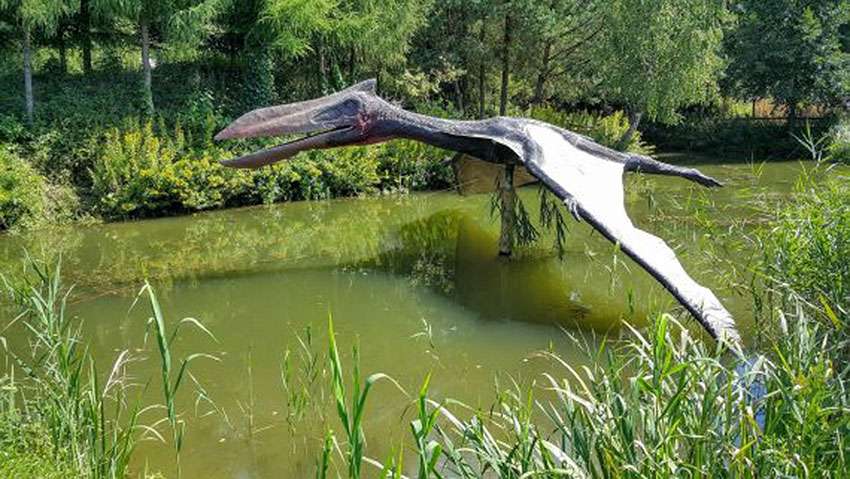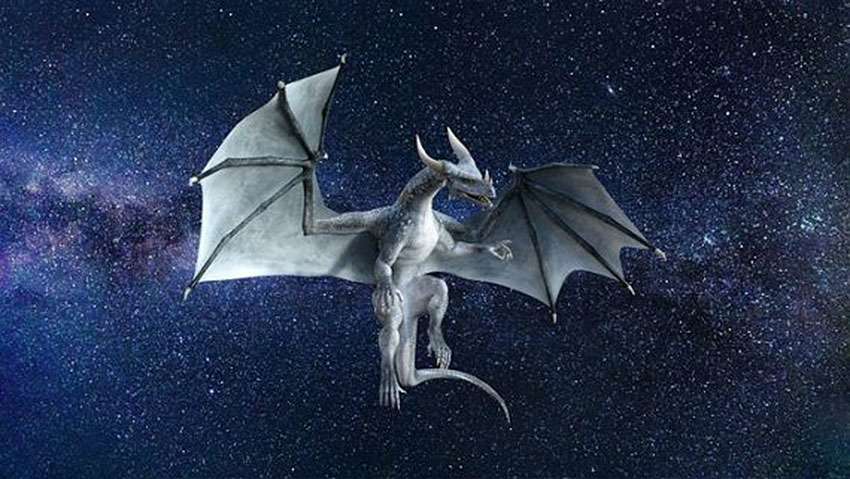Japan and China have their dragon tales. So do England and Ancient Greece. But Australia? Well, the island has plenty of other strange creatures – why not dragons? Looks like you can add them to the list – paleontologists have discovered fossils of a creature with a 23-foot (7 meters) wingspan and a huge, spear-like skull that inspired one to flatly declare:
“It’s the closest thing we have to a real life dragon.”
University of Queensland paleontologist and professor Tim Richards led the research, published in the Journal of Vertebrate Paleontology, identifying the fossils of an extremely rare Australian pterosaur – in the 40 years since the first one was found, fewer than 20 have been identified. This one was taken from the Toolebuc Formation near Richmond, North West Queensland – a hotbed of Australian pterosaurs. The specimen (KKF494) is the rostral (front nose and mouth) portion of a crested mandible (jawbone) and it got paleontologist Richards excited immediately because it appeared to be from the largest pterosaur ever to have flown over Australia.

“The new pterosaur, which we named Thapunngaka shawi, would have been a fearsome beast, with a spear-like mouth and a wingspan around seven meters. It was essentially just a skull with a long neck, bolted on a pair of long wings. This thing would have been quite savage. It would have cast a great shadow over some quivering little dinosaur that wouldn’t have heard it until it was too late.”
There’s your opening scene to “Attack of the Australian Dragons.” Richards estimated the skull at just over 1 meter (3.3 feet) long with a mouth filled with 40 razor teeth, swooping “like a magpie during mating season” – watching these monster dragons mating sounds like that scene in the movie where you start to take a liking to them … and then they finish mating and go back to killing and eating anything in their reach. Those estimates and descriptions are from just the lower portion of the jaw – co-author Dr. Steve Salisbury says in the press release that the upper jaw would help tell more about this new species of pterosaurs known as anhanguerians, including how they were able fly with such massive heads and skinny necks. For now, the lower mouth will have to do – it was enough to use words from the now-extinct language of the indigenous Wanamara Nation to name it.
“The genus name, Thapunngaka, incorporates thapun [ta-boon] and ngaka [nga-ga], the Wanamara words for ‘spear’ and ‘mouth’, respectively. The species name, shawi, honors the fossil’s discoverer Len Shaw, so the name means ‘Shaw’s spear mouth’.”
Thapunngaka shawi lived during the Early Cretaceous period, which began 145 million years ago. But this is Australia – could one or more of these dragons still be found somewhere in the outback? The Aboriginal peoples told tales of the Rainbow Serpent, which was said to cause rainbows as it moved from one river or waterhole to another. The Kanmare was descried as a large snake with a mane around its head that attacked fishermen. It’s said that just about all native tribes had a variation of the Rainbow Serpent, but stories of flying serpents or dragons seem to e rare. Either the Thapunngaka shawi died off completely or survivors have managed to keep extremely well hidden.

Pterosaur fossils worldwide are rare due to their fragility, but this research team hopes the existence of one jawbone of these Australian “dragons” means more will be found.
Screenwriters tired of penning Godzilla and King Kong variations hope so too.
By Paul Seaburn
Mysterious Universe
